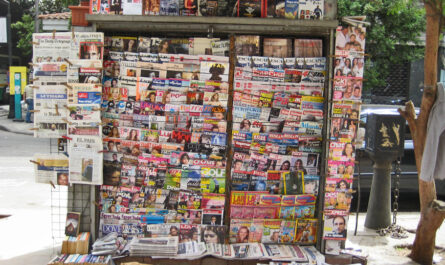Copy editors represent a relatively small expense, but they can make an enormous difference to a publication’s quality. Why don’t top magazines employ them for their digital content?
Yesterday, within the span of a few hours, I encountered both of the following paragraphs as screenshots shared on Twitter (now “X”):
Paul Feig: I always figured something bad was gong to happen to Lindsay when she was out with the Dead.
Collected from Vanity Fair.
and
A couple of weeks later, nearly 40,000 East Coast gays were struck down with a case of FOMO. Meanwhile, the 500 New York club kids and LGBTQ+ elite who had won the RSVP lottery, were gathered in a small warehouse for Charli’s Boiler Room set. Or, as DJ Ty Bushwick tweeted, “The Bushwick Met gala”.
Collected from Rolling Stone U.K.
There are egregious, glaring typographic errors in both of these passages.
The first example—“gong to happen”—would not trigger a spellchecker, but it would be immediately obvious to anyone who bothered to read the piece closely. This story is from 2012; it has been like this for over a decade, and nobody has bothered to address it.
The second example contains a few turns of phrase that could be chalked up to artistic license (the final sentence is a fragment; that the final period falls outside the quotation marks can be forgiven, as that’s how they do things in the U.K.). But it also contains a few definitive errors. For one thing, his name is Ty Sunderland, not Ty Bushwick (and yes, I knew that even without looking it up despite the fact that I’ve never moved in the New York club scene—I just have my radar up). For another, “Gala” should be capitalized, as it’s part of a proper name (Sunderland himself tweeted the sentence all in lowercase, but since Rolling Stone chose to capitalize “Bushwick” and “Met,” it should have capped “Gala” as well).
But most unforgivable of all, there’s a comma separating a subject and its verb. Consider the sentence “The boy, kicked the ball.” It’s pretty obvious that the comma doesn’t belong there. The second sentence of the Rolling Stone paragraph makes an identical mistake by putting a comma after “lottery.”
The only conclusion I can draw from this is that neither of these publications employ copy editors for their digital content. Certainly not trained copy editors—perhaps they have an intern or assistant editor give things a quick scan? But perhaps not; in 2022, Richard Lawson (Vanity Fair’s chief critic) tweeted, “Love to find so many fucking typos in something that’s already been published. Good job, Richie!” Blaming himself for the publication of typos strongly suggests he was the last person to review his own writing before it went live. And as I’ve said before, trying to copyedit your own writing is like trying to do your own makeup without a mirror.
There are certainly people who know how to copyedit available, so the fact that they’re not employed by two of the world’s most widely circulated magazines (Vanity Fair and Rolling Stone rank as the U.S.’s 56th and 47th most widely read magazines, respectively) can only mean that they’ve decided the reputational damage, loss of readership and ultimate economic fallout that will result from inferior writing is less than the cost of hiring a $30-an-hour subeditor. Given that this is their primary product, I can’t agree with that philosophy.
It takes a lot of people to put together a magazine or a website; between rent and web hosting and IT and sales and marketing and HR and legal and writers and editors and so on ad nauseam, I can only imagine that the annual operations budget for each of these websites runs into the millions. A copyediting team might cost, what, an additional 1%, if that? Isn’t that worth it to ensure that the thing people actually visit your website to consume is as good as it can be?
Imagine going to a restaurant that positions itself as one of the best in the city. It boasts about its farm-to-table cuisine; its linen tablecloths are ironed; its wait staff is highly trained and professionally dressed; the decor oozes quiet luxury thanks to the skills of a top interior design firm; the chef was recently profiled in the city’s best newspaper. When the food arrives at your table, the presentation is impeccable. But when you take your first bite, you feel the sensation of a hair on your tongue. It would have taken only a second for someone to inspect the plate and ensure it was hair-free as it left the kitchen—but nobody took the time, and now it’s in your mouth. Suddenly, it doesn’t matter how comfy the banquettes are or how creamy the cruelty-free foie gras is. That small but easily preventable slip-up has ruined your entire dining experience.
The same is true of reading. All those hours of sales and marketing and writing and editing are for naught if the first thing a reader encounters is an error. How gripping your narrative, how exclusive your scoop—it’s all undermined by the small but easily preventable slip-ups that a copy editor is there to catch.
So why aren’t industry-leading publications using them anymore?



